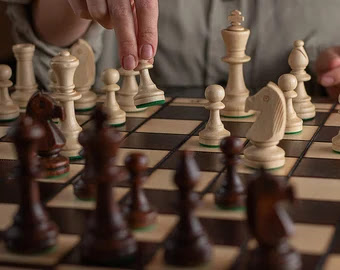Inferring genres of trailers based on genre theory
The genre is science fiction based on the trailer for Everything, Everywhere, All at Once, 2022.
Still image from Everything, Everywhere, All at Once, 2022, showing the fantasy elements as seen in the trailer.
Limited verisimilitude would be best used to determine the genre because th convention usually attempts to transport the audience to worlds that are escapist or fantastical. The main character appears to be taken from her normal life and warped into other timelines, making her responsible for stopping an evil force spreading through the timeline. The combination of showing attributes of the real world, going to the store and getting receipts for purchases, with fantasy elements of magic and traveling to different time dimensions is what makes limited verisimilitude identify the genre as science fiction.
The elements of text genre subversion that seemingly apply to the film are audience saturation effects and social context because the idea of a multiverse existing is a relatively new topic being shown in movies and shows. Marvel deep-dived into using the idea of a multi-verse to move the plots of the films and because that was so successful, it may have influenced this film to utilize it and apply it to an older, Asian woman to add a hero representation to a topic that people cannot seem to get enough of.
The genre hybridity in the film expands audience appeal through how dark and dry humor is used at points mixed in with science fiction. It is relevant because fans of fantasy and lovers of comedy can each find that genre within the film. Having a balance between drama/seriousness and lighthearted is essential to maintain interest from more than just one group.
The genre of Phantom of the Paradise, 1974, is music drama/satire based on the trailer.
Still image from Phantom of the Paradise, 1974, of the masked man appearing in many shots of the trailer, showing how costume and makeup effects audience impression and genre.
The convention that would be best used to determine the genre is iconography because the trailer uses a lot of mis en scène decisions with makeup and costume looks that would be associated with something dramatic or intense. The man wearing the frightening mask in all black for example can be assumed as a villain of the story, but because of the ridiculousness of the costume's impression, the film resembles satire. The use of music, random dancing clips, and music notes as a symbol in the trailer also reveals the amount of musicality involved in the film. Straight-cut editing to showcase the costumes, symbols of music, character reactions, and more is what helps solidify what genre the film is a part of.
The elements of text genre subversion that seemingly apply to the film are cultural effects because the movie is satire, reminiscent of the musical, Phantom of the Opera. The antagonist in the musical is also a masked man, and he hides under an opera house listening to its music. The film's title, Phantom of the Paradise and its content share similarities to Phantom of the Opera in a satirical way. Continuing, the setting's style is also set in the 70s, in reflection of the time period the movie was released. The dance moves, outfits of characters, and even the music being played in the trailer are 70s popular culture. Both of these cultural phenomenons caused the film to be influenced.
Genre hybridity is apparent here by the quick tonal shifts created by the transition between the drama/chaos of people screaming and dancing to a horror similarity where there is an unseen threat by the man showering. The inclusion of several genres makes the trailer more chaotic and alluring to the audience.
The genre of Electric Dreams, 1984, is a romantic comedy/science fiction.
Still image from Electric Dreams, 1984, showing the machine that will give the main character a hard time on his conquest for love.
The conventions that would be best used to determine the genre are narrative similarities. Science fiction plot lines often incorporate 'man versus machine' stories, as does romantic plots which often have an obstacle or conflict that needs to be resolved before 'getting the girl.' In this case, the man buys a computer that begins to complicate his life in a very humanizing manner as it takes control of everything around him — including his love life.
The elements of text genre subversion that seemingly apply to the film are historical and social effects because the creation of a computer was made and its usage was spreading, so the film was shaped to reflect the transition from old to 'new' technology and the main character being clueless to how to use it. The twist is that the 'new' technology/computer became invasive to his life, so connecting the fears of technology consumers and the lack of knowledge surrounding computers molded the film.
The genre hybridity in the film is genre piggybacking and mirroring of contemporary audience consumption experiences. Computer usage was increasing and the debate on whether technology will take over our lives began. The 'machine versus man' storyline from science fiction is what this film derived from. Using it to develop a romantic connection creates the film's romantic comedy impression. It also mirrors the way the audience at the time consumed media by incorporating the boxy, large computers used at the time for comedic relief and relatability.



















